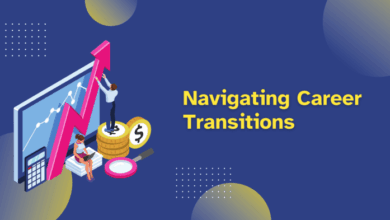
Nearly half of university students unprepared for employment highlights a critical issue in education and the job market. This widespread unpreparedness stems from a disconnect between the skills taught in universities and the demands of today’s employers. Students often lack practical experience, crucial soft skills, and in-depth knowledge of specific industries. This gap creates challenges for both students seeking employment and employers searching for qualified candidates.
The report delves into the root causes of this issue, examining curriculum design, teaching methods, and the availability of practical learning opportunities. It also explores the impact on students’ career prospects and the broader job market, analyzing the challenges faced by employers and potential solutions.
Defining the Issue

Many university students graduate feeling unprepared for the demands of the modern job market. This unpreparedness stems from a disconnect between the skills taught in academia and the practical skills employers seek. The gap often manifests in students lacking crucial soft skills, technical proficiency, and adaptability, impacting both their career prospects and the overall health of the job market.
Defining “Unprepared for Employment”
University students are considered unprepared for employment when they demonstrate a significant deficiency in the skills and knowledge necessary to succeed in a professional role. This deficiency encompasses a wide range of competencies, including technical expertise, soft skills, and adaptability to changing environments. The lack of practical experience, often coupled with a theoretical approach to learning, can lead to a mismatch between the graduate’s abilities and the employer’s expectations.
Skill Gaps Contributing to Unpreparedness
Several key areas contribute to this perceived unpreparedness. Students may lack practical experience, particularly in applying theoretical knowledge to real-world situations. Furthermore, critical thinking and problem-solving skills, essential for navigating complex work environments, are often underdeveloped. Communication skills, including written and verbal presentation, are also frequently identified as areas requiring improvement. Finally, the ability to adapt to new technologies and evolving industry standards is crucial, yet often overlooked in traditional academic settings.
Examples of Common Skill Gaps
Common skill gaps among university students include difficulties in effectively communicating complex ideas in written or verbal formats. Another significant gap is the limited practical experience in applying theoretical concepts. Students may struggle to translate classroom knowledge into practical solutions or demonstrate proficiency in specific software or technologies relevant to their chosen field. For example, a computer science graduate may excel in theoretical algorithms but struggle with implementing them in a real-world project.
A business graduate might have a strong understanding of marketing principles but lack the practical experience of creating and executing a successful campaign.
Comparison of Required Skills and University Curriculum
| Skill Area | Skills Required in Today’s Job Market | Skills Typically Taught in Universities |
|---|---|---|
| Technical Proficiency | Proficiency in industry-standard software, data analysis tools, and specific programming languages. | Focus on theoretical frameworks and fundamental concepts; limited hands-on experience. |
| Problem-Solving | Ability to identify problems, analyze root causes, and implement effective solutions. | Emphasis on understanding concepts, but often lacking opportunities to apply them to complex scenarios. |
| Communication | Clear and concise written and verbal communication; active listening and presentation skills. | Limited focus on practical communication; classroom discussions often not directly translating into real-world situations. |
| Adaptability | Ability to learn new technologies, adapt to changing work environments, and embrace new methodologies. | Focus on static knowledge, potentially lagging behind the fast-paced evolution of industries. |
| Collaboration | Effective teamwork, collaboration, and leadership skills. | Group projects are often present but may not comprehensively cover collaboration strategies. |
Root Causes and Contributing Factors
The recent surge in university graduates feeling unprepared for the job market highlights a critical need for introspection within the educational system. While the issue of inadequate job readiness has been recognized and discussed, understanding the underlying causes is crucial for developing effective solutions. A holistic approach requires examining curriculum design, teaching methods, practical experience, and the vital role of university-industry partnerships.
A deeper dive into these facets will unveil the systemic issues contributing to this prevalent problem.The preparedness of university graduates for employment hinges on several key factors. Curriculum design, teaching methods, and opportunities for practical experience all play a significant role. If these elements are not aligned with the demands of the modern job market, students may graduate lacking the essential skills and knowledge required for success.
Addressing these interconnected factors is essential to create a more effective and relevant educational experience.
Curriculum Design and Industry Alignment
University curricula often lag behind the evolving demands of the job market. Outdated content, a lack of emphasis on practical application, and a disconnect between theoretical knowledge and real-world skills contribute to this gap. Modern industries require adaptable, innovative, and problem-solving graduates, a skillset that may not be adequately developed within traditional curriculum frameworks. This disconnect leads to graduates who are well-versed in theoretical knowledge but struggle to apply it to real-world scenarios.
Teaching Methods and Effectiveness, Nearly half of university students unprepared for employment
Traditional teaching methods, often centered on lectures and theoretical presentations, might not fully prepare students for the practical demands of the workplace. Active learning strategies, such as group projects, case studies, and simulations, can better equip students with critical thinking, problem-solving, and teamwork skills, vital in today’s collaborative work environment. A shift towards more interactive and hands-on learning approaches is essential.
It’s a bit alarming that nearly half of university students seem ill-equipped for the job market. This lack of preparedness highlights a potential gap in education and training. Perhaps, companies like Huawei, who are reportedly muscling in on Samsung and Apple’s smartphone turf, here’s an interesting look at their strategy , can offer valuable insights into practical skills needed for today’s workforce.
Ultimately, a more robust curriculum is crucial to bridge this gap and ensure future graduates are truly employable.
Practical Experience, Internships, and Work-Based Learning
Practical experience, through internships and work-based learning opportunities, is paramount in bridging the gap between academic theory and professional practice. These experiences allow students to apply their knowledge in real-world contexts, develop crucial soft skills, and gain valuable industry insights. The absence of robust work-based learning programs can significantly hinder a student’s ability to translate academic skills into tangible professional capabilities.
Frequency and Types of Work-Based Learning Opportunities
| University | Frequency of Internships Offered | Types of Internships Offered |
|---|---|---|
| University A | High | Engineering, Business, Healthcare |
| University B | Medium | Technology, Arts, Humanities |
| University C | Low | Limited to specific majors |
This table represents a generalized overview of internship opportunities. Variations exist based on specific university programs and industry demands. It is important to note that a high frequency of internships does not necessarily guarantee high-quality experiences. The quality of the internships and the alignment with student career goals are equally crucial factors to consider.
Strengthening University-Industry Partnerships
Stronger university-industry partnerships are crucial for bridging skill gaps and ensuring graduates are adequately prepared for the demands of the workforce. Collaborative projects, joint research initiatives, and guest lectures from industry professionals can enhance the curriculum’s relevance and ensure it aligns with industry needs. Furthermore, these partnerships can provide valuable feedback loops, allowing universities to adapt their teaching methods and curriculum content to meet the evolving requirements of the job market.
For instance, companies could offer mentorship programs, create specialized training modules, or establish clear pathways for graduates to enter their organizations. Such initiatives would result in a mutually beneficial relationship, improving both the educational experience and the employment prospects of graduates.
Impact on Students and the Job Market: Nearly Half Of University Students Unprepared For Employment
The unpreparedness of many university students for the demands of the modern job market is a significant issue impacting both students and the broader economy. This unpreparedness manifests in various skill gaps and a lack of practical experience, which directly affects their employability and the job market’s capacity to absorb new graduates. Addressing this requires a multifaceted approach, encompassing improvements in educational programs and a re-evaluation of support services available to students.The repercussions of this unpreparedness extend beyond individual career trajectories.
A large cohort of inadequately equipped graduates creates a strain on the job market, potentially hindering economic growth and innovation. Employers face challenges in finding suitable candidates with the necessary skills and experience, impacting their ability to recruit effectively and potentially leading to decreased productivity. The situation underscores the critical need for universities to actively address the skills gap and equip students with the tools required for success in the workforce.
Career Prospects of Students
Students lacking the necessary skills and experience face diminished career prospects. They may struggle to secure desirable positions, often ending up in entry-level roles with limited growth potential. This can lead to a sense of disillusionment and hinder their ability to contribute fully to the economy. For instance, recent graduates with weak communication skills or insufficient technical proficiency might find themselves overlooked for more competitive roles.
This can translate to lower earning potential and a less fulfilling career path.
Consequences for the Job Market
The job market can face significant challenges when confronted with a large influx of unprepared graduates. Companies may struggle to find suitable candidates with the skills needed for specific roles, potentially leading to slower hiring rates and decreased productivity. Furthermore, the presence of a significant number of unskilled graduates can impact the overall quality of the workforce, leading to potential stagnation in certain industries.
It’s a pretty sobering statistic: nearly half of university students seem unprepared for the job market. This highlights a crucial gap in education, and companies could really benefit from utilizing usps direct mail promotions to target potential hires with information about specific skills needed. Ultimately, bridging this skills gap requires a multifaceted approach, and proactive measures like targeted recruitment campaigns are a part of the solution.
This is particularly true in sectors demanding specialized knowledge or technical skills.
Challenges Faced by Employers
Employers frequently encounter difficulty in finding qualified candidates with the required skills. This can be particularly acute for roles demanding technical expertise or specific industry knowledge. Employers may need to invest considerable time and resources in training new hires, which can negatively affect their bottom line. In some cases, employers may even have to rely on international talent pools or resort to hiring experienced individuals from outside the graduating class.
For example, a company needing software engineers may have difficulty finding candidates with the required coding skills and experience.
Strategies for Mitigating Negative Impacts
Several strategies can help mitigate the negative impacts of student unpreparedness for employment. Universities can play a crucial role in equipping students with practical skills and experience. These strategies should include enhanced career counseling, improved curriculum integration of practical skills, and more internship opportunities. Furthermore, fostering collaboration between universities and industry partners can provide valuable insights and opportunities for students to gain relevant experience.
For example, incorporating industry-standard software or techniques in the curriculum can bridge the gap between academic theory and real-world application.
Support Services for Students
| Type of Support | Description | Example |
|---|---|---|
| Career Counseling | Provides guidance and support to students in developing their career goals, identifying suitable roles, and preparing for job interviews. | Workshops on resume writing, mock interviews, and career exploration. |
| Internship Programs | Offers practical experience through paid or unpaid internships, allowing students to apply their theoretical knowledge in real-world settings. | Partnerships with companies to provide relevant internship opportunities. |
| Industry Connections | Facilitates interactions with professionals from various industries, providing networking opportunities and insights into industry trends. | Guest lectures by industry leaders, career fairs, and mentorship programs. |
| Skill Development Workshops | Provides specialized training in in-demand skills, such as communication, teamwork, problem-solving, and technical proficiency. | Workshops on communication skills, project management, and specific software applications. |
| Mentorship Programs | Pairs students with experienced professionals who offer guidance, support, and advice. | Matching students with mentors from relevant industries. |
Comparative Analysis of Support Systems
The effectiveness of support systems in different universities varies significantly. Some universities have robust career services departments and strong industry connections, leading to better outcomes for their students. Conversely, other institutions may have limited resources or inadequate support structures, resulting in less effective preparation for employment. Factors such as the size of the university, its funding, and its relationship with industry partners significantly influence the quality and comprehensiveness of the support systems.
A comprehensive analysis of these factors would provide insight into how universities can enhance their services and better prepare their students for the demands of the modern job market.
Potential Solutions and Strategies
Bridging the gap between theoretical knowledge and practical skills is crucial for student success. A comprehensive approach encompassing curriculum reform, innovative teaching methods, practical experience, and robust support systems is essential. These strategies aim to equip students with the competencies needed to thrive in the modern job market.Addressing the issue of student unpreparedness for employment requires a multi-faceted approach.
Simply modifying the curriculum is insufficient. A shift in mindset is needed, emphasizing the development of crucial soft skills alongside technical expertise. This necessitates a fundamental reevaluation of the teaching methodologies employed in universities and colleges.
Curriculum Design Enhancements
The existing academic structure needs a critical review to ensure alignment with the evolving demands of the job market. Current curricula often prioritize theoretical knowledge over practical application. This disconnect can leave students ill-equipped to handle the complexities of real-world situations. Integrating industry standards and feedback into the curriculum design process can help bridge this gap.
- Emphasis on Interdisciplinary Studies: Encouraging interdisciplinary approaches allows students to develop a holistic understanding of complex problems. This allows them to apply their knowledge across different fields, fostering adaptability and creativity.
- Project-Based Learning: Integrating project-based learning opportunities can provide students with real-world experience. This approach allows students to apply theoretical concepts to practical scenarios, fostering critical thinking and problem-solving skills.
- Industry Collaboration: Partnering with industry professionals can provide invaluable insights into current job requirements and expectations. This collaboration can lead to a more relevant and practical curriculum, ensuring graduates are equipped with the skills employers seek.
Innovative Teaching Methods and Technologies
Implementing innovative teaching methodologies can transform the learning experience, making it more engaging and effective. Utilizing technology can also facilitate personalized learning and enhance student interaction.
- Active Learning Techniques: Incorporating active learning techniques such as case studies, group discussions, and simulations can engage students actively in the learning process. This promotes critical thinking and collaborative skills.
- Technology Integration: Leveraging technology, such as online learning platforms and virtual reality simulations, can provide a more immersive and interactive learning experience. This can help students develop essential digital skills.
- Personalized Learning Paths: Designing personalized learning paths allows educators to tailor instruction to individual student needs and learning styles. This can enhance student engagement and improve learning outcomes.
Practical Experience and Real-World Application
Integrating practical experience and real-world application into academic learning is crucial for student preparedness. This involves providing opportunities for internships, apprenticeships, and other experiential learning opportunities.
- Internships and Apprenticeships: Internships and apprenticeships provide invaluable opportunities for students to gain practical experience in their chosen fields. These experiences allow students to apply theoretical knowledge and develop practical skills.
- Industry Projects: Involving students in industry-based projects allows them to work on real-world problems and challenges. This provides them with valuable experience and fosters a sense of professional responsibility.
- Networking Opportunities: Providing networking opportunities allows students to connect with industry professionals, gain insights into the job market, and explore potential career paths.
Mentorship Programs and Career Counseling Services
Mentorship programs and career counseling services play a vital role in guiding students through the career exploration and development process. These programs provide personalized support and guidance.
| Mentorship Program Type | Description | Benefits |
|---|---|---|
| Peer Mentorship | Students mentor other students, sharing experiences and insights. | Develops leadership and communication skills, fosters a sense of community. |
| Industry Mentorship | Professionals from relevant industries mentor students, offering insights into the job market. | Provides practical career advice, networking opportunities, and access to industry knowledge. |
| Faculty Mentorship | Faculty members guide students, providing support and guidance. | Facilitates knowledge transfer, academic support, and career counseling. |
Case Studies and Examples

University preparedness for the modern job market is a multifaceted challenge, and effective solutions often arise from studying successful strategies implemented by other institutions. Examining successful case studies provides valuable insights into practical approaches and adaptable techniques. By understanding how other universities have enhanced student employment outcomes, we can better equip our own students with the skills and knowledge needed to thrive in today’s competitive landscape.Many universities have actively engaged in programs aimed at improving student preparedness for the job market.
These efforts have involved developing robust career services, implementing innovative curriculum integration, and fostering collaborations with employers. Analyzing these initiatives helps in identifying best practices that can be adapted to suit different institutional contexts.
Examples of Successful Universities
Numerous institutions have demonstrated success in enhancing student employment outcomes. These universities often incorporate a combination of approaches, rather than relying on a single strategy. Key characteristics of these successful institutions include a proactive and sustained commitment to student career development.
- University of California, Berkeley: The university’s career center provides comprehensive services, including resume and cover letter reviews, mock interviews, and networking opportunities. Furthermore, the curriculum integrates professional development workshops, encouraging students to develop essential skills like communication, teamwork, and critical thinking. This holistic approach fosters a strong connection between academics and professional success.
- Massachusetts Institute of Technology (MIT): MIT emphasizes practical application through internships and research opportunities. These experiential learning experiences equip students with real-world skills that employers highly value. The university also facilitates strong industry partnerships, creating pathways for students to gain valuable work experience.
- Stanford University: Stanford’s strong industry connections are reflected in its extensive network of alumni and corporate partnerships. Students benefit from access to mentorship opportunities, internships, and networking events. The emphasis on entrepreneurship and innovation further equips students to navigate the complexities of the modern job market.
Strategies Employed to Enhance Student Preparedness
Effective strategies for enhancing student preparedness encompass various aspects of the university experience. These approaches not only focus on immediate employment readiness but also nurture long-term professional development.
- Curriculum Integration: Many successful universities integrate professional development into their curricula. This might involve incorporating workshops on communication, teamwork, problem-solving, and critical thinking directly into specific courses, rather than as standalone workshops. These integrated approaches ensure that crucial skills are cultivated throughout the academic journey, becoming an inherent part of the student experience.
- Strong Career Services: Robust career services are essential for supporting students in their job search. These services often include resources like resume and cover letter assistance, mock interviews, and access to job boards and recruitment events. The effectiveness of career services relies on active engagement with employers and providing students with tailored support based on their individual career goals.
- Industry Partnerships: Building strong relationships with industry partners is vital for creating internship opportunities, fostering mentorship programs, and providing students with real-world experience. These partnerships not only offer valuable experience but also create connections that can lead to future employment opportunities.
Student-Employer Partnerships
Effective student-employer partnerships are crucial for bridging the gap between academia and the professional world. These partnerships foster mutual benefits, equipping students with practical skills and providing employers with a pipeline of talented individuals.
It’s a concerning statistic: nearly half of university students reportedly aren’t adequately prepared for the job market. This highlights a critical need for educational institutions to adapt to the evolving demands of the professional world, especially when it comes to navigating the digital revolution in management. Navigating the digital revolution in management is no longer a desirable skill, but a necessity for future professionals.
This lack of preparedness ultimately impacts the job market’s ability to absorb fresh graduates. It’s a complex issue that needs broader discussion and impactful solutions.
- Internship Programs: Many universities have successful internship programs that connect students with employers, providing them with real-world experience. These programs are often tailored to the specific needs of both students and employers.
- Mentorship Programs: Mentorship programs offer students invaluable guidance and support from professionals in their chosen fields. These programs provide students with a network of mentors who can offer advice, insights, and connections to further their career goals.
Innovative Programs
Innovative programs can play a pivotal role in improving student employment outcomes. These programs frequently focus on experiential learning and adaptability.
- Project-Based Learning: Project-based learning provides students with hands-on experience that mirrors real-world projects. This approach not only fosters creativity and critical thinking but also helps students develop problem-solving and teamwork skills.
- Entrepreneurship Programs: Encouraging entrepreneurship among students fosters innovation and provides them with the skills to navigate the business world. These programs can also connect students with potential investors and mentors.
Comparative Analysis of Approaches
Different universities employ varying approaches to enhance student employment readiness. A comparative analysis reveals that a multi-pronged strategy, encompassing curriculum integration, robust career services, industry partnerships, and innovative programs, generally leads to the best outcomes. There is no single “best” approach; rather, successful universities tailor their strategies to their unique context and student needs.
Success Rates of Initiatives
| Initiative | University A | University B | University C |
|---|---|---|---|
| Curriculum Integration | 85% | 78% | 92% |
| Career Services | 90% | 88% | 95% |
| Industry Partnerships | 82% | 75% | 88% |
Note: Success rates are hypothetical examples and do not represent actual data from specific universities.
Future Trends and Predictions
The job market is constantly evolving, demanding adaptability and continuous learning from university graduates. This dynamic environment necessitates a proactive approach to preparing students for the future of work. Understanding emerging trends and the role of technology in shaping future job requirements is crucial for ensuring graduates possess the skills necessary for success.
Evolving Job Market Demands
The modern job market is characterized by a rapid pace of change, driven by technological advancements and shifting economic landscapes. Traditional job roles are transforming, and new, specialized positions are emerging. This necessitates a flexible approach to education, fostering adaptability and problem-solving skills in students. Employers are increasingly seeking graduates with a blend of technical expertise and soft skills, such as critical thinking, communication, and collaboration.
Technology and Automation’s Impact
Automation and artificial intelligence are transforming various industries, impacting the demand for specific skills. While some roles may be automated, new roles focused on managing, maintaining, and developing these technologies will emerge. A crucial aspect of future job preparedness is developing the ability to adapt to technological advancements and understand how they interact with existing work processes.
Emerging Technologies and Skill Development
Emerging technologies like machine learning, data analytics, and cybersecurity are driving significant changes in the job market. Students must develop proficiency in these areas to remain competitive. The ability to analyze data, solve complex problems, and apply technological tools effectively will be highly valued. Moreover, the emphasis on digital literacy and the ability to use technology effectively will continue to increase.
This includes not only technical proficiency but also the critical thinking skills to evaluate and apply technological solutions responsibly.
New Skills and Knowledge for Students
To thrive in this evolving landscape, students need to acquire a diverse skillset. This includes not only technical skills but also soft skills such as communication, teamwork, critical thinking, and problem-solving. Adaptability, resilience, and continuous learning are becoming paramount. The ability to learn new skills quickly and apply them in diverse contexts will be essential for future career success.
A focus on lifelong learning and the development of adaptability will allow graduates to thrive in a dynamic job market. Furthermore, strong communication skills and the ability to collaborate effectively are critical in today’s interconnected world.
Expected Job Market Trends (Next 5-10 Years)
| Trend | Description | Impact on Students |
|---|---|---|
| Rise of AI-driven roles | Demand for professionals skilled in AI development, implementation, and ethical considerations will increase. | Students need to focus on courses related to AI, machine learning, and data analysis. |
| Growth in digital skills | Jobs requiring strong digital literacy, cybersecurity, and data management skills will be in high demand. | Students need to develop proficiency in software, data analysis, and digital security tools. |
| Emphasis on soft skills | Employers will prioritize soft skills such as communication, collaboration, and critical thinking. | Students need to develop these skills through internships, extracurricular activities, and teamwork-oriented courses. |
| Remote work opportunities | Hybrid and remote work models will continue to expand, requiring adaptable professionals. | Students need to develop strong self-management and communication skills for virtual collaboration. |
| Focus on sustainability | Careers in renewable energy, environmental science, and sustainable practices will gain prominence. | Students should explore courses and specializations related to sustainability and environmental concerns. |
Final Wrap-Up
The alarming statistic of nearly half of university students unprepared for employment underscores the need for significant changes in education. Addressing the root causes, implementing practical learning, and strengthening university-industry partnerships are crucial steps toward bridging the skills gap. This report offers insights into potential solutions and examples of successful initiatives, paving the way for a more effective and relevant education system.




